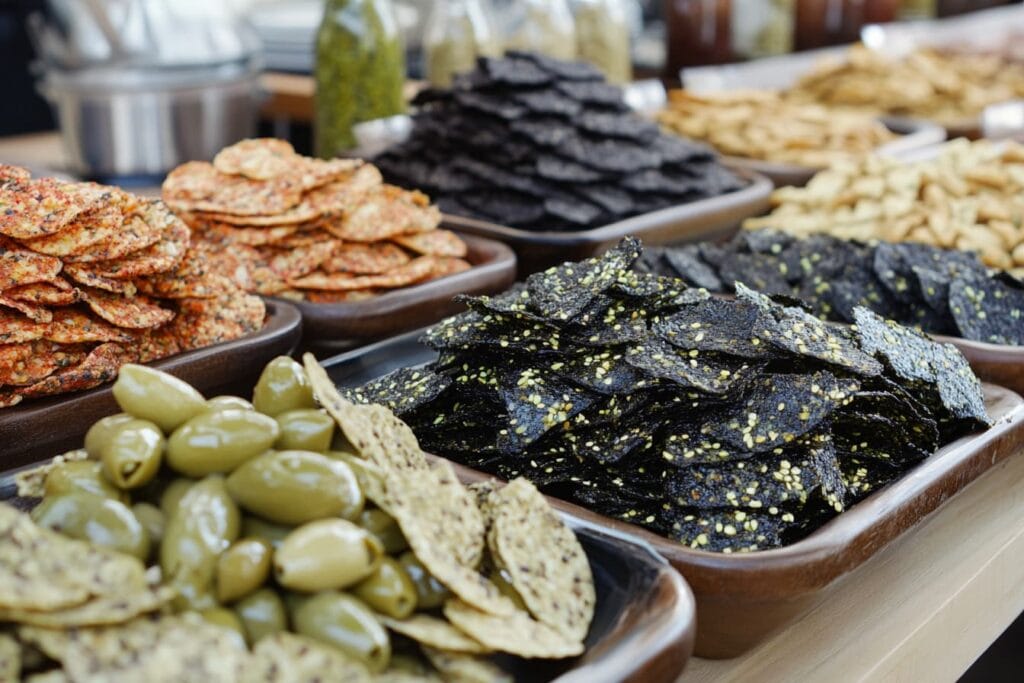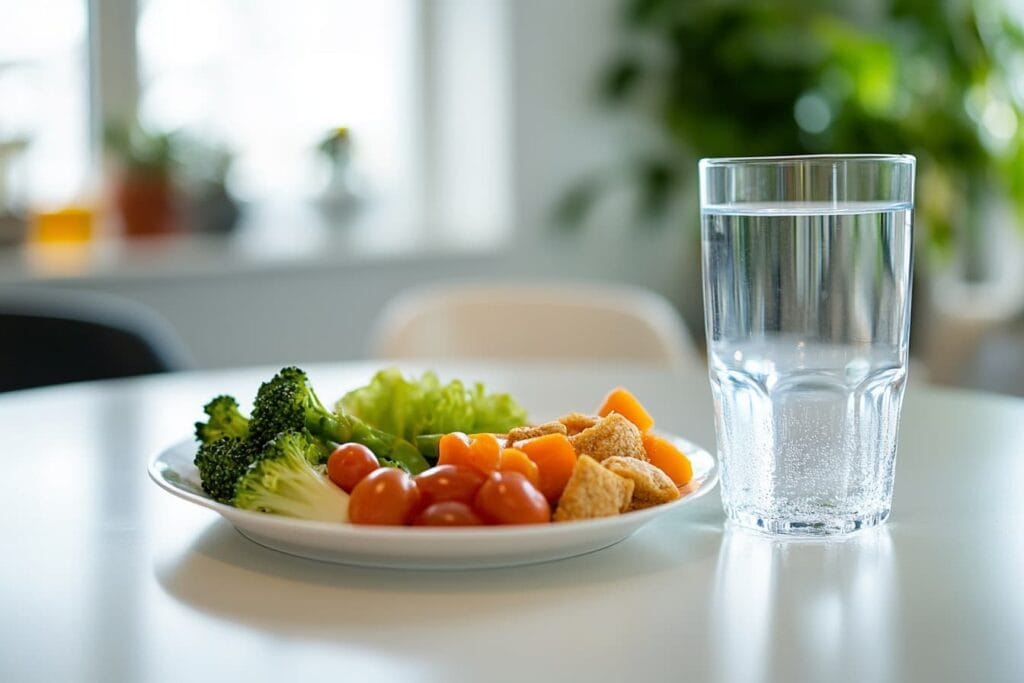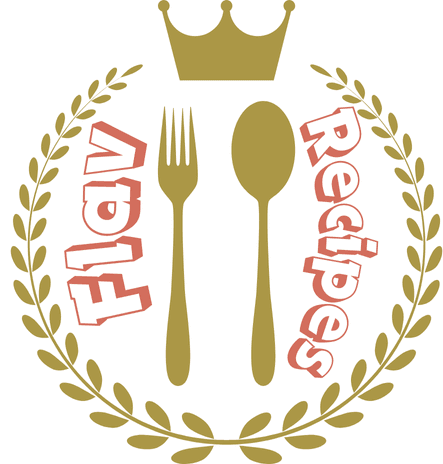Introduction
Salty snacks have a universal appeal, loved for their satisfying crunch and savory flavor. Whether you’re hosting a party, craving a quick bite, or just looking for something to pair with your favorite beverage, salty snacks are often the go-to choice. But what makes them so irresistible? This article explores the appeal of salty snacks, popular options, and even some healthy and DIY alternatives to enjoy without overindulging.
Why Do We Love Salty Snacks?
Salty snacks are more than just tasty—they tap into our biological and psychological preferences, making them hard to resist.
How Salt Enhances Flavor
Salt is a natural flavor enhancer. It doesn’t just make food salty—it amplifies other flavors, making everything from chips to popcorn taste more vibrant and delicious. This ability to elevate flavor explains why even a simple salted cracker can feel so satisfying.
The Brain’s Reaction to Salt
When you eat something salty, it triggers your brain’s reward system. Salt releases dopamine, the “feel-good” hormone, which makes eating salty snacks pleasurable. This connection to comfort and satisfaction is why we often crave salty treats during celebrations or stressful moments.
Popular Types of Salty Snacks
Salty snacks come in many forms, ranging from classic choices to gourmet and healthy options.
Classic Salty Snacks
- Pretzels: A timeless favorite with a satisfying crunch.
- Popcorn: Light, airy, and perfect for pairing with different seasonings.
- Salted Nuts: A protein-packed snack that’s both filling and flavorful.
Gourmet and Specialty Snacks
- Artisanal Potato Chips: Made with unique flavors like truffle or sea salt and vinegar.
- Spiced Nuts: Roasted with seasonings like paprika, cumin, or cinnamon for added complexity.
- Flavored Rice Crackers: Often combined with soy sauce or sesame for an umami kick.
Healthy Salty Snacks
- Roasted Chickpeas: Crunchy, high in protein, and easy to flavor at home.
- Whole-Grain Crackers: A great base for cheese or hummus.
- Baked Veggie Chips: Made from sweet potatoes, kale, or zucchini for a nutrient boost.
DIY Salty Snack Ideas
Making salty snacks at home allows you to control the ingredients and flavors while enjoying a fresh, healthier option. Here are some simple and delicious recipes to try:

Roasted Chickpeas
Ingredients:
- 1 can of chickpeas, drained and rinsed
- 1 tbsp olive oil
- 1/2 tsp sea salt
- 1/2 tsp smoked paprika (or your favorite spice blend)
Instructions:
- Preheat your oven to 400°F (200°C).
- Pat the chickpeas dry with a paper towel, removing any loose skins.
- Toss the chickpeas with olive oil, salt, and smoked paprika.
- Spread them on a baking sheet in a single layer and roast for 25–30 minutes, shaking the pan occasionally for even crisping.
- Let them cool before enjoying.
Seasoned Popcorn
Ingredients:
- 1/4 cup popcorn kernels
- 1 tbsp olive oil or melted butter
- 1/2 tsp garlic powder
- 1/4 tsp sea salt
- Optional: grated Parmesan cheese or nutritional yeast for extra flavor
Instructions:
- Heat the olive oil in a large pot over medium heat. Add the popcorn kernels and cover with a lid.
- Shake the pot occasionally to prevent burning. When popping slows, remove from heat.
- Transfer the popcorn to a bowl and toss with garlic powder, sea salt, and Parmesan or nutritional yeast, if desired.
Baked Veggie Chips
Ingredients:
- 1 large sweet potato, zucchini, or kale
- 1 tbsp olive oil
- 1/2 tsp sea salt
- Optional: chili powder or dried herbs for added flavor
Instructions:
- Preheat your oven to 375°F (190°C).
- Thinly slice the vegetable of your choice. For kale, remove stems and tear into bite-sized pieces.
- Toss the slices or leaves with olive oil and sea salt.
- Arrange in a single layer on a baking sheet and bake for 10–15 minutes, checking frequently to avoid burning.
- Cool before serving for maximum crunch.
Salty Snacks from Around the World
Salty snacks take on unique forms across different cultures, reflecting local flavors and ingredients. Exploring these options can introduce you to new and exciting treats.
Asian Salty Snacks
- Rice Crackers: Light and crunchy, often seasoned with soy sauce, sesame, or seaweed for a savory flavor.
- Seaweed Crisps: Made from dried seaweed sheets, these snacks are low in calories and packed with umami.
- Tempura Snacks: Vegetables or seafood lightly battered and fried, offering a salty, crispy bite.
European Salty Treats
- Salted Breadsticks: A simple yet satisfying snack often enjoyed with dips or cheese.
- Marinated Olives: Brined olives seasoned with herbs and spices like rosemary or chili flakes.
- Savory Cheese Crackers: Made with sharp cheeses like cheddar or Parmesan for an intense flavor.
Middle Eastern Favorites
- Za’atar Pita Chips: Pita bread baked with olive oil and sprinkled with za’atar, a spice blend of thyme, sesame, and sumac.
- Roasted Nuts: Almonds or pistachios roasted with salt and spices for a bold taste.
- Pickled Vegetables: A tangy, salty snack made from cucumbers, turnips, or carrots soaked in brine.
Health Considerations with Salty Snacks
While salty snacks are delicious, consuming too much salt can have health implications. Understanding how to enjoy these snacks in moderation is key to maintaining a balanced diet.

Recommended Sodium Levels
The World Health Organization (WHO) recommends that adults consume no more than 2,300 milligrams of sodium per day, roughly equivalent to one teaspoon of salt. High sodium intake can lead to issues like high blood pressure, which increases the risk of heart disease and stroke. Monitoring your sodium intake is especially important if you frequently enjoy salty snacks.
Choosing Better Salty Snack Options
- Check Labels: When buying store-bought snacks, read the nutrition label and choose options labeled “low sodium” or “reduced salt.”
- Go for Natural Ingredients: Opt for snacks made from whole foods like nuts, seeds, and vegetables. These provide additional nutrients without excessive salt.
- Season Strategically: When making snacks at home, use flavorful herbs and spices like garlic powder, paprika, or lemon zest to reduce the need for added salt.
Balance with Hydration and Healthy Meals
- Stay Hydrated: Drinking plenty of water helps counteract the dehydrating effects of sodium.
- Pair with Nutrient-Dense Foods: Combine salty snacks with fresh vegetables, fruits, or whole grains to balance your meal. For instance, enjoy whole-grain crackers with hummus or marinated olives with sliced cucumbers.
How to Pair Salty Snacks with Other Foods
Salty snacks can be elevated when paired with complementary flavors and textures. Whether for a party platter or a simple snack, these combinations create a satisfying balance.
Sweet and Salty Pairings
- Dark Chocolate and Salted Nuts: The bitterness of dark chocolate enhances the savory notes of salted nuts.
- Popcorn with Honey Drizzle: Lightly salted popcorn topped with a drizzle of honey offers a delightful sweet and salty contrast.
- Fruit and Cheese Platters: Combine salty cheeses like feta or gouda with fresh fruits such as apples, grapes, or pears.
Creamy and Crunchy Pairings
- Hummus with Pita Chips: The creamy texture of hummus pairs perfectly with the crunch of lightly salted pita chips.
- Guacamole with Veggie Sticks: Salted veggie sticks like carrots or cucumber slices are refreshing and pair well with guacamole.
- Yogurt with Savory Granola: Try plain Greek yogurt topped with a sprinkle of spiced or salted granola for a unique snack.
Beverage Pairings for Salty Snacks
- Iced Tea: The subtle sweetness of unsweetened iced tea balances the saltiness of snacks like pretzels or nuts.
- Sparkling Water with Citrus: A squeeze of lemon or lime in sparkling water complements salty chips or popcorn.
- Red Wine: Bold red wines pair beautifully with savory snacks like olives or cheese crackers.
Frequently Asked Questions
Why Am I Craving Sweet and Salty?
Craving sweet and salty foods is common and can be caused by various factors, including stress, nutritional needs, or hormonal changes. These cravings occur because sweet and salty flavors activate multiple taste receptors and trigger the release of dopamine, a hormone associated with pleasure and reward.
For a detailed explanation of the science behind these cravings and tips to manage them, visit Why Am I Craving Sweet and Salty?.
Are Salty Snacks Unhealthy?
Salty snacks can be part of a balanced diet if consumed in moderation. The key is to choose healthier options, like roasted nuts or veggie chips, and monitor your sodium intake. Overeating processed salty snacks with high sodium content can lead to health issues such as high blood pressure, so portion control is essential.
What Are the Best Healthy Salty Snacks?
Healthy salty snacks include roasted chickpeas, popcorn seasoned with herbs, and baked veggie chips. Other great choices are whole-grain crackers with hummus, salted nuts, and seaweed crisps. These snacks provide nutrients like protein, fiber, and healthy fats while keeping sodium levels manageable.
How Can I Make Salty Snacks at Home?
Making salty snacks at home is simple and allows you to control ingredients. Popular recipes include roasted chickpeas, seasoned popcorn, and baked sweet potato chips. Use herbs and spices like garlic powder, smoked paprika, or chili flakes to add flavor without relying on too much salt.
How Much Sodium Is Too Much in Snacks?
Experts recommend consuming no more than 2,300 milligrams of sodium daily, and ideally less than 1,500 milligrams for most adults. Check nutrition labels to ensure snacks fit within your daily limits, especially if you’re pairing them with other salty foods.
Can Salty Snacks Be Paired with Healthy Meals?
Absolutely! Salty snacks like nuts, olives, or whole-grain crackers pair well with fresh vegetables, lean proteins, or fruit. For example, marinated olives with sliced cucumbers or salted nuts with an apple make excellent, balanced combinations.
Conclusion
Salty snacks are a beloved part of our daily lives, offering a satisfying crunch and savory flavor that’s hard to resist. From classic options like pretzels and popcorn to healthier choices like roasted chickpeas and veggie chips, there’s a salty snack for every preference and occasion.
By understanding the appeal of salty snacks and exploring healthier alternatives, you can enjoy them without compromising your health. Whether you’re making your own snacks at home or choosing from store-bought options, focusing on natural ingredients and mindful portion sizes is key.
Salty snacks don’t just satisfy cravings—they can also be part of balanced meals when paired with nutrient-rich foods like fruits, vegetables, and whole grains. So the next time you reach for a salty treat, savor it while keeping balance and moderation in mind.

